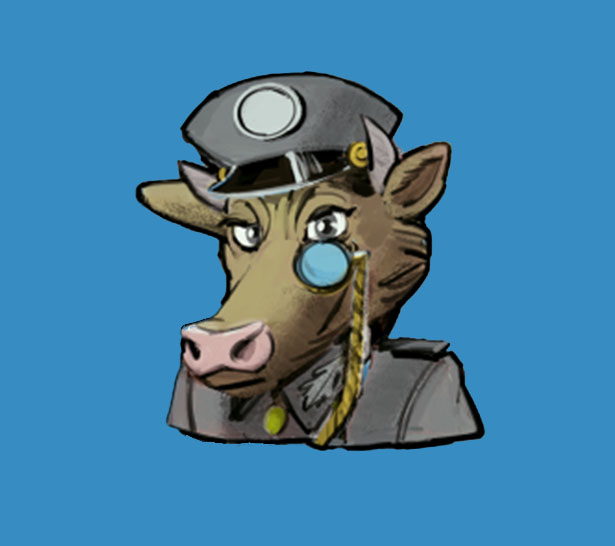Dragon
Dragons are a species of fire-breathing lizards created by the goddess Phina for the land of Eden. Though they vary in shape, size, and number of appendages, dragons are, at their core, beings of pure flame. The only way to slay one, therefore, is to extinguish the spark which brought it into being. And that would involve getting through the nigh-impenetrable armor of their scales, dodging a breath weapon hot enough to melt steel and stone, and avoiding teeth and claws so sharp they can cleave a man in twain.
So, yeah, good luck with that.
Luckily for the peoples of Eden, most dragons die of their own accord before long. Whether fighting each other over hordes of gold or exhausting their inner blazes in but a few chaotic misadventures, dragons live by The Rule of the Kurgan, imparted to them by their Highlander-loving creator: “it’s better to burn out than to fade away!”
Anatomy & Morphology
All dragons are scaled and generally reptilian in nature. All have two eyes, two ears, a nose, and a mouth full of razor-sharp teeth. All have horns of some sort. And yet, beyond that the shapes of the three major breeds are quite distinct.
- The so-called Common Dragon has four legs, two wings, and a tail. It is sometimes called the Western Dragon, in order to contrast with the Eastern Dragon below.
- Wyverns have two winged forelimbs, two hind legs, and a tail. They are also distinguished by the pair of front-facing and upward-curving horns which protrude from the corners of their jaw.
- The Eastern Dragon has four legs, no wings, a tail, and a decidedly longer body than its cousins the wyvern and the common dragon. Despite its lack of wings, the eastern dragon can still fly.
Characteristics & Abilities
Dragons are, on the whole, mischievous anarchists. The only thing they desire more than entropy is gold, and the only true reason they desire gold is because the other peoples of the world seem to love it so much. There is no greater joy for a dragon than taking—or destroying—the prized possession of another being, and then seeing what that other being does as a result.
Draconic saliva is highly flammable, and together with the heat of their breath makes their most infamous weapon possible. Their scales render them impervious to nearly every kind of attack imaginable, with their only true vulnerabilities being the extreme cold and weapons made of the same. And their ability to form telepathic and empathic bonds with each other and with any other sapient species makes them some of the world’s most versatile communicators.
If only the messages they sent weren’t always about fire, blood, and other naughty carryings-on…
Development & Social Structure
Dragons develop quickly, lethal to most species by eight months and the apex predator in Eden by one year old. Draconic parents do return to nesting sites to be present for the birth of their young, and one parent or the other will typically stay by the juvenile’s side for the first few months, but after that it’s generally every drake or drakaina for themselves.
And yet, though they are solitary by nature, you will occasionally find them in small groups called, appropriately enough, conflagrations. This behavior is exhibited, in particular, during conflicts with capricorns—who are the dragons’ opposite number, in a way, given that they are just as obsessed with order as dragons are with chaos.
Reproduction
Though dragons are highly adaptable and can live in just about any climate, they only nest in places with direct access to extreme heat. After copulation and fertilization, a dragon claws away at the surface of their intended nest until they reach suitable depth. Then they lay the egg inside the hole they’ve dug and cover it for protection. After a seven-month gestation period, the egg hatches in a violent explosion and the newborn emerges.
The destructive force with which a dragon enters the world is perhaps the most frightening aspect of their existence to many Edenians. You never know where a dragon might have lain an egg, and you never know when it might hatch. And given that dragons are just as willing to nest on man-made heat sources as the ones that nature provides, this has led to increased security around exhaust vents in the Reekian megalopolis and on the Pu Dijk space station.
Thankfully, for whatever reason, dragons do not nest on the slopes of Dükuhüo Aüki—the mother volcano at the center of the Edenian supercontinent. That probably wouldn’t end well for anyone.
Dragons seem to prefer laying their eggs on the Five Moons of Eden instead, much smaller celestial objects with easier access to their warm cores.







I really enjoyed this take on dragons, very different from what I'm used to. The Kurgan quote especially made me smile. The quick lifespan and explosive egg hatching are especially cool details!
Take a look at my Institutions of Learning challenge article.
Learn about the World of Wizard's Peak and check out my award winning article about the Ghost Boy of Kirinal!
Thanks! Yes, the explosive egg idea came first, while I was brainstorming ideas for this wave of prompts. The quick lifespan kinda just fell out of my brain as I was writing.